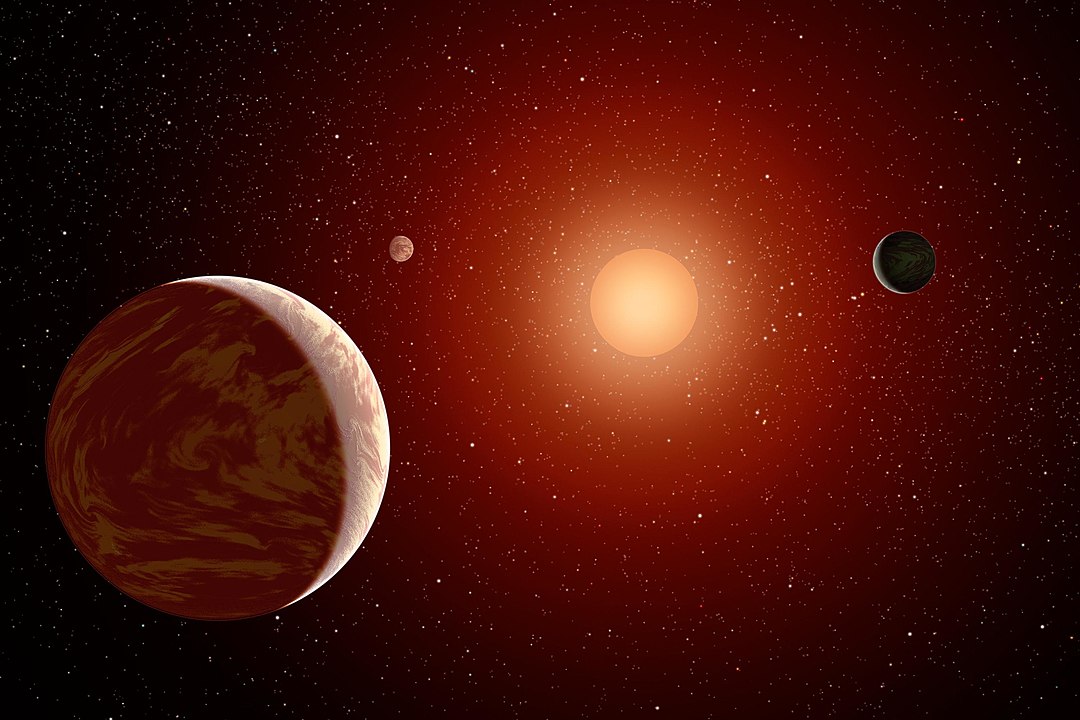Earth is our only example of a habitable planet, so it makes sense to search for Earth-size worlds when we’re hunting for potentially-habitable exoplanets. When astronomers found seven of them orbiting a red dwarf star in the TRAPPIST-1 system, people wondered if Earth-size planets are more common around red dwarfs than Sun-like stars.
But are they? Maybe not.
The exoplanet-hunting age arrived when NASA launched the Kepler space telescope in 2009. The mission was a success, and found almost 5,000 exoplanets, with 2,711 confirmed and another 2056 awaiting confirmation. The Kepler mission ended in 2018, and TESS (Transiting Exoplanet Survey Satellite) took over planet hunting that same year.
Kepler’s initial results suggested that Earth-sized exoplanets in habitable zones were more common around M-dwarfs. But as time has passed, the Kepler sample has come under increased scrutiny.
New research digs into the issue and explains what’s happened since Kepler, and how its data needs a rethink. The paper is “No Evidence for More Earth-sized Planets in the Habitable Zone of Kepler’s M versus FGK Stars.” It’s been accepted into The Astronomical Journal and is currently available on the pre-press site arxiv.org. The lead author is Galen Bergsten, from the Lunar and Planetary Laboratory at the University of Arizona.
“Reliable detections of Earth-sized planets in the habitable zone remain elusive in the Kepler sample,
even for M dwarfs,” the authors write. Astronomers used to think that Kepler had found quite a sizable number of these planets. Different researchers used Kepler’s findings to extrapolate the occurrence rate of these desirable planets. But current research suggests that Kepler’s results weren’t accurate. That means the estimated occurrence rates were inaccurate, too.

Kepler was meant to focus on Earth-sized planets around Sun-like stars, with preferential long-term monitoring of around one year. One year monitoring would produce more robust data than shorter monitoring, when it comes to measuring the occurrence of these planets. But the spacecraft suffered some mechanical failures which ended that phase of operations. As a result, its survey was interrupted before it could deliver a confident survey of Earth-sized planets in habitable zones.
But the data was all researchers had to work with. This led to estimates of the occurrence of Earth-sized planets extrapolated from Kepler’s data on red dwarfs. A 2014 study suggested that 25% of red dwarfs have super-Earths. And a 2015 study found 156 Earth-size candidates around low mass M dwarfs. The 2015 results arrived at an occurrence rate of 0.16 Earth-size planets around red dwarfs. Since about 75% of the Milky Way’s stars are red dwarfs, that means there’s an enormous number of Earth-size planets around red dwarfs. Could it be true?
Maybe not.
The ESA’s launched their Gaia spacecraft in 2013 and it specializes in measuring stars. It’s focused on astrometry, which measures the positions, distances, and motions of stars. But it also performs photometric measurements of the stars’ luminosity, revealing their temperatures, masses, and ages. It’s better at that than Kepler was.

Gaia exposed the inaccuracy in Kepler’s results. “However, updated stellar properties from Gaia have shifted many Kepler stars to earlier spectral type classifications, with most stars (and their planets) now
measured to be larger and hotter than previously believed,” the authors explain.
What astronomers are seeking is the elusive number of Earth-sized planets in habitable zones across all star types. The only reliable way to find it, other than measuring every star and planet, is to extrapolate from a sample. Since Kepler’s sample is now understood to be flawed, it means that previous extrapolations are flawed. Where does that leave us?
This research arrives at new numbers based an both Kepler’s data and Gaia’s data. The new numbers are far lower than initial estimates and extrapolations. “The updated sample’s paucity of Earth-sized habitable zone planet detections means that Kepler offers no evidence supporting an increased number of Earth-sized habitable planets around M dwarfs compared to FGK stars,” the authors write. “When evaluated in instellation, we found a lack of sufficient evidence that would support M dwarfs having more Earth-sized planets than FGK stars at habitable zone instellations.” Instellation is a planet’s proximity to a star.

So Kepler’s early data was not reliable.
There’s still more research to be done before we understand how many Earth-like planets there are, around M dwarfs or around Sun-like (FGK) stars. Red dwarfs are dim to begin with, and a smaller planet doesn’t block much light, making transits difficult to detect.
This research isn’t the last word. As better data rolls in and planet-hunting scientists study it meticulously, they’re bound to arrive at a better understanding.
We’d all like to know how many Earth-sized planets there are in habitable zones. But when it comes to red dwarfs, habitability is not well understood to begin with. Red dwarfs, especially younger ones, emit lots of radiation. It might render planets in their putative habitable zones inhabitable. Their may be no way for them to hold onto their atmospheres.

And stars aren’t consistent. Their luminosity changes over time, which means their habitable zones shift over time. Our own Sun used to be fainter, and it’s slowly, inexorably brightening. So getting a star’s age wrong skews everything else.
There are a lot of unanswered questions around Earth-sized exoplanets, optimistic versus conservative habitable zones, red dwarf flaring, and a host of other issues. But one of the basic things astronomers would like to understand is how widespread Earth-sized planets are.
Looks like we’re still waiting to find out.

